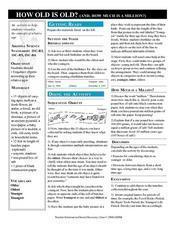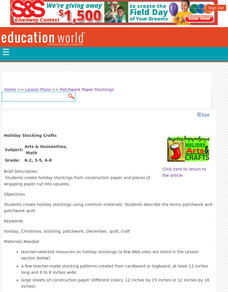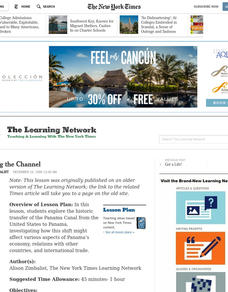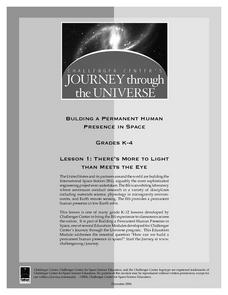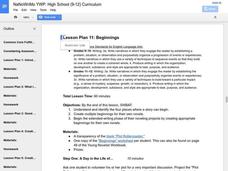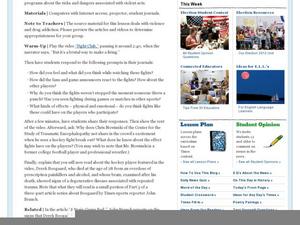Curated OER
Bill of Rights Day (December 15th)
On December 15, 1791, the ratification of the first ten amendments to the Constitution of the UnitedStates of American by three-quarters of the states took place. These were subsequently incorporated into the Constitution and became...
Curated OER
December Concentration Game
Students play the classic game of Concentration using cards with December holiday and weather pictures on them. They research different December holidays and adapt the details to the game of concentration.
Curated OER
December Celebrations
Learners explore the various ways people in our country and other countries conduct celebrations during the month of December. They research the celebration they've chosen and will present this to the class.
Curated OER
Bill of Rights Day
Fifth graders examine and identify the values and purposes of the Bill of Rights. They complete a class KWL chart, participate in a class jigsaw activity, write and illustrate a book about the first ten amendments, participate in a mock...
Curated OER
Bill of Rights
Students research, list, define and discuss all the aspects to the United States Bill of Rights. They assess their foundations by James Madison and Thomas Jefferson and reflect on all the conditions happening at the time period of...
Curated OER
Here's an Instant Activity for December 15, 2003
Pupils complete a spelling activity that helps them create and spell words. In this spelling lesson plan, students manipulate letters to make words and complete the worksheet by writing new words.
Desert Discoveries
How Old is Old? (And, How Much is a Million?)
Here is an interesting lesson on how old things are designed for young scientists. In it, learners compile a list of their birthdays, and the class puts them in sequential order from youngest to oldest. Then, they sequence 15 objects...
Curated OER
Patchwork Paper Stockings
Youngsters create holiday stockings from construction paper and pieces of wrapping paper cut into squares. It's always nice to have a holiday craft, or two, up your sleeve during December. This craft is easy to implement, and the...
Curated OER
Winter Insulation
Students test insulation materials. In this energy conservation lesson, students use different insulation materials to see which one holds heat the best. Students pour hot water into bottles, take the temperature, wait 15 minutes, then...
Curated OER
Laughing Matters
Is laughter really the best medicine? Middle and high schoolers discuss the truth behind this adage by reading and discussing a New York Times article about Dr. Patch Adams. They participate in a round-table debate in response to...
Curated OER
Law of the Sea/ Don't Rock the Boat
Students read Ronald Reagan's December 27, 1988 proclamation about US territorial waters. They discuss its contents to decipher exactly what it means and to complete a worksheet answering questions about the proclamation.
Curated OER
Liberty for Libya?
Students create a country profile on Libya in order to consider the viability of a transition to a democratic government.
Curated OER
A Maya Masterpiece
Students analyze the symbols presented in a Maya artifact. They create collages that depict a theme related to contemporary life in their community, and write brief analyses explaining the symbolism of the images they chose.
Curated OER
Tooning In to Morals
Students discuss cartoons and the moral lessons they can teach. They imagine and draw a cartoon figure who could impart a lesson of some kind to younger Students.
Curated OER
Changing the Channel
Pupils explore the historic transfer of the Panama Canal from the United States to Panama, investigating how this shift might affect various aspects of Panama's economy, relations with other countries, and international trade.
Curated OER
There's More to Light than Meets the Eye
Students explore the concept that not all light is visible to the
human eye. Although UV light is not visible, it can still be harmful, causing sunburns or skin cancer. They use special beads to detect UV light around the school....
Center for Civic Education
The Power of Nonviolence: What Is Nonviolence? What Does It Cost?
Your young learners will delve into the language of primary source documents in order to identify the characteristics, benefits, and costs of nonviolence. The lesson plan includes a mix of activities, including an anticipatory activity,...
The New York Times
Writing Fiction Based on Real Science - NYTimes.com
Refuse to alienate your scientific-minded young scholars during your creative writing unit. Learners explore how literary writing can reflect observable fact, and be based in actual science. The links include examples of fiction and...
Curated OER
Lesson Plan 11: Beginnings
Every good novel needs a solid beginning! Setting the stage can have your budding authors stumped, so use this lesson to get them thinking. After examining the plot rollercoaster image (included) they consider the four places...
Curated OER
Lesson Plan 17: Novel, Take 2
It's all about using peer resources in this writing process activity, which includes a fantastic novel revision worksheet packet. Learners have read a partner's story draft the night before, and groups have a "lightning round of...
Curated OER
New $1 Coins Honor U.S. Presidents
Elementary schoolers examine money, then read a news article about new coins being produced by the U.S. Mint. The teacher introduces the article with samples of American money and a vocabulary activity, then students read the news piece...
Curated OER
On 'Punched Out': Looking at Brain Trauma and Other Risks of Violent Sports
The tragic story of Derek Boogard, a hockey star whose sports-related brain injuries eventually lead to his death, is told through a series of videos. There are also articles that can be read. This poignant instructional activity gets...
Curated OER
First Grade Math: 1-3
In this first grade math review worksheet, 1st graders answer multiple choice questions about symmetry, money, measurement, time, and more. Students complete 25 questions.
EngageNY
Estimating Probability Distributions Empirically 2
Develop probability distributions from simulations. Young mathematicians use simulations to collect data. They use the data to draw graphs of probability distributions for the random variable in question.






